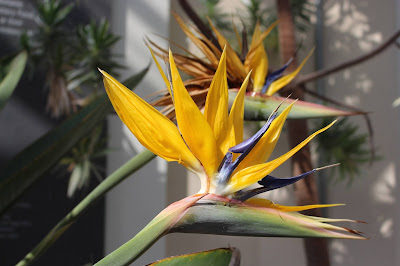Mobile phone cameras have given us two viewpoints we have become used to; the slim portrait and the letterbox landscape. Each provides a viewpoint that draws the eye differently. Slimline portraits give a top to bottom view that works especially well with open air shots. The eye can follow down from the sky or up from the gound, taking in the different layers or levels of the picture, like this:
In this image, looking from bottom to top, the fringe of reeds gives way to blue water, with a pattern of clearly delineated ripples, stretching away to the far bank. Above the trees a clear blue sky gradually deepens in shade away from the horizon. This viewpoint provides a sliver of the landscape emphasising the depth of the scene.
The same view taken in letter-box landscape style has a different feel:
Here, the eye is drawn primarily to the ripples on the water. The far bank clearly divides land and sky, with the latter showing much less shade variation. The shadows on the water combine with the ripples to give a sense of a breeze blowing, something you cannot capture directly. This picture gives you a sense of width rather than depth, showing the expanse of water at the expense of the sky, keeping you eye earthbound.
Each style of picture can be effective, but as you can see, they do achieve different results. It is one way the photographer imposes their decision-making on the viewer, deciding what to show and what to exclude. This is a neutral subject, there is nothing lurking to one side or up in the air. Applied to other circumstances, a street protest for example, the decisions might not be so innocent. In this case though, you can enjoy the view without worrying too much about the photographers intentions (my intentions, of course, since I took the photographs).
So the question is: which do you prefer? feel free to comment.

















